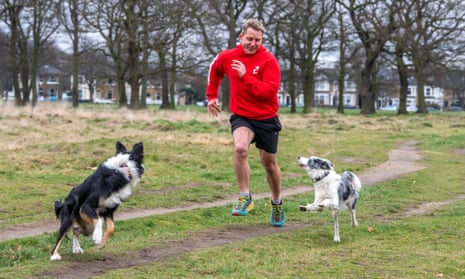How Do I Train to Walk 20 Miles a Day? : Mastering the Marathon Mindset
To train to walk 20 miles a day, gradually increase daily mileage and incorporate strength training for endurance. Consistency is key to building walking stamina.
Walking 20 miles a day requires proper training and preparation to avoid injury and optimize performance. A structured training plan that gradually increases mileage, incorporates rest days, and includes strength training exercises will help build endurance and reduce the risk of overuse injuries.
By setting realistic goals and staying committed to a consistent training regimen, you can successfully increase your walking distance to achieve the 20-mile mark. It is important to listen to your body, stay hydrated, and fuel yourself with appropriate nutrition to support your training efforts. With dedication and perseverance, reaching the goal of walking 20 miles a day is attainable.
Setting The Goal
Setting a goal is the first step to achieving anything in life, and walking 20 miles a day is no different. By setting a clear goal, you give yourself a target to work towards, helping you stay focused and motivated. In this section, we will discuss how to determine your motivation, set a realistic timeline, and ensure you are on the right track to accomplishing your goal.
Determining Your Motivation
Finding the motivation to walk 20 miles a day can be challenging, but it’s crucial to success. Take some time to reflect on why you want to tackle this goal. Are you trying to improve your fitness level? Are you training for a charity walk? Or maybe you simply enjoy the feeling of accomplishment that comes with challenging yourself.
Once you have identified your primary motivation, write it down somewhere visible. This will serve as a constant reminder of why you started this journey and will help keep you focused when faced with obstacles or temptations to give up.
Setting A Realistic Timeline
Setting a realistic timeline is essential to ensure that you don’t overexert yourself and risk injury. Walking 20 miles a day is a significant feat, so it’s important to build up your endurance gradually. Start by setting short-term goals, such as increasing your daily distance by one mile every week.
Remember, consistency is key when it comes to training. Stick to your training program and gradually increase the distance over time. By setting small milestones along the way, you can measure your progress and stay motivated.
Monitoring Your Progress
Tracking your progress is crucial to staying motivated and ensuring you are on target to achieve your goal. Keep a journal or use a fitness app to record the distance you walk each day. This not only helps you visualize your progress but also allows you to identify any patterns or areas where you may need to make adjustments.
Additionally, consider investing in a pedometer or a fitness tracker to accurately monitor the number of steps you take. These devices can provide valuable data about your walking speed, calories burned, and overall fitness level.
In conclusion, setting a goal, determining your motivation, setting a realistic timeline, and monitoring your progress are key steps to train yourself to walk 20 miles a day. By focusing on these elements, you will stay motivated, make steady progress, and ultimately achieve your goal.

Credit: www.trainingpeaks.com
Building Endurance
- Begin with short walks, about 2-3 miles a day.
- Over time, increase mileage by 10% each week.
- Listen to your body and avoid pushing yourself too hard.
- Alternate between fast-paced walking and slow recovery walks.
- Interval training boosts cardiovascular endurance effectively.
- Start with short intervals and gradually increase the intensity.
Developing Mental Toughness
Develop mental toughness to train yourself to walk 20 miles a day. Build resilience, endurance, and determination through consistent practice and gradually increasing your distance over time. Discover the power of a strong mindset and push yourself to achieve your walking goals.
Walking 20 miles a day requires mental fortitude. Positive thinking is crucial to staying motivated and focused during long walks. Visualization can help prepare the mind for the physical demands of walking 20 miles a day. Mentally rehearsing the journey helps build confidence and mental stamina.
Credit: www.amazon.com
Incorporating Strength Training
Strength training is an essential component when it comes to training to walk 20 miles a day. By targeting key muscles and balancing strength with flexibility, you can improve your overall endurance and reduce the risk of injury. Let’s dive deeper into these aspects to understand their importance and how to incorporate them into your training routine.
Targeting Key Muscles
When you embark on a goal to walk 20 miles a day, it’s crucial to focus on strengthening the key muscles involved in walking. These muscles primarily include the quadriceps, hamstrings, glutes, calves, and core. By strengthening these muscles, you’ll be better equipped to handle long distances with ease.
To specifically target these muscles, incorporate exercises such as:
- Squats: Squats help strengthen the quadriceps, hamstrings, and glutes. Start with bodyweight squats and gradually increase intensity by adding weights.
- Lunges: Lunges are excellent for targeting the quadriceps, hamstrings, and glutes. Perform forward lunges, reverse lunges, and side lunges to engage the muscles from different angles.
- Calf Raises: Calf raises are effective for strengthening the calf muscles. Stand on the edge of a step with your heels hanging off and slowly rise up onto your tiptoes, then lower back down.
- Planks: Planks are essential for core strength. Get into a push-up position on your forearms and hold for as long as possible to engage your core muscles.
Balancing Strength And Flexibility
While strength training significantly improves your muscles’ ability to support long-distance walking, it’s equally important to maintain flexibility. Flexibility helps prevent muscle imbalances and reduces the risk of injuries.
Incorporate the following exercises to enhance your flexibility:
- Dynamic Stretching: Dynamic stretches involve controlled movements that gradually increase the range of motion. Perform leg swings, hip circles, and arm circles before and after strength training sessions.
- Yoga or Pilates: Yoga and Pilates exercises focus on stretching and strengthening the entire body. Regular practice of poses like downward dog, warrior, and cat-cow can improve flexibility and balance.
- Foam Rolling: Using a foam roller, roll out your muscles to release tension and improve flexibility. Target areas such as the calves, hamstrings, glutes, and back.
Remember, finding the right balance between strength and flexibility is crucial for optimal performance and injury prevention. Incorporate these exercises into your training routine, gradually increasing the intensity and duration to prepare your body for walking 20 miles a day.

Credit: www.theguardian.com
Frequently Asked Questions Of How Do I Train To Walk 20 Miles A Day?
How Do I Build Up To Walk 20 Miles A Day?
To gradually build up to walking 20 miles a day, start by increasing your daily distance incrementally, wearing proper footwear, staying hydrated, and listening to your body for rest.
How Long Does It Take To Walk 20 Miles A Day?
Walking 20 miles a day usually takes about 6-8 hours. Factors like terrain and pace can affect the exact time.
Do I Need To Train For A 20 Mile Walk?
Yes, training for a 20-mile walk is essential to build stamina and endurance. Gradually increase your walking distance to prepare your body for the challenge. Wear comfortable shoes and stay hydrated during your practice walks.
How Do I Increase My Stamina For Long Distance Walking?
To increase stamina for long distance walking, gradually increase pace and distance, stay hydrated, eat balanced meals, and incorporate strength training.
Conclusion
Achieving a daily 20-mile walk is challenging but attainable with consistent training. Remember to start gradually and increase distance over time. Pay attention to footwear, hydration, and pacing to prevent injuries and maintain motivation. Keep track of progress and celebrate small achievements along the way to reach your walking goals successfully.







